A small town and commune located in the Apulia (Puglia) region of southern Italy, Alberobello has become famous for its clusters of unique homes and structures called trulli. As these trulli houses are some of Italy’s most intriguing examples of architecture, the Alberobello region has become a popular place for tourists to visit.
To make your trip to Alberobello and the surrounding regions to see these famous homes as easy as possible to plan and prepare for, we’ve created this complete guide of Italy’s trulli houses. In this article, you’ll learn the history of the Trulli houses, where they’re located and where you can stay in one, and a few other fun things to do while visiting the small town of Alberobello.
If you’re ready to fire into the history of Alberobello and the Puglia region itself, then let’s get going. Continue reading to learn the intricate history of the trulli houses and a bit of what else there is to do in the town of Alberobello.
The History of Trulli Houses
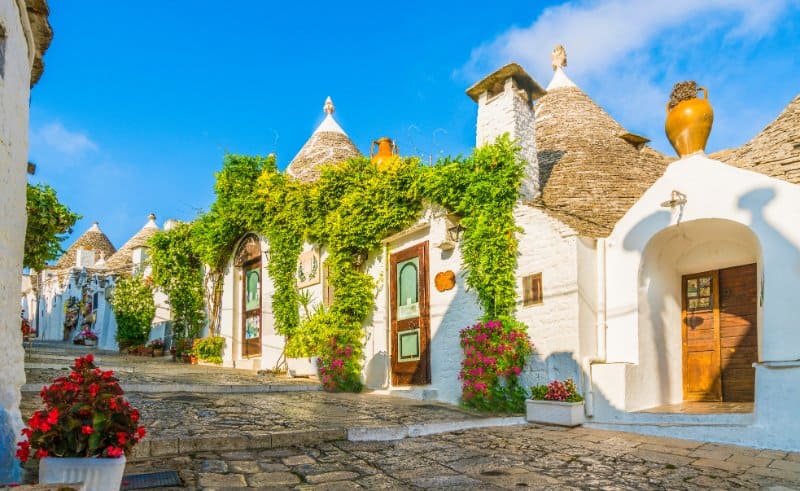
In the small town of Alberobello, located near the Metropolitan City of Bari, Apulia, sit hundreds of trulli houses, which are some of the most uniquely constructed homes you’ll find in Italy. These architectural and engineering anomalies are homes constructed of dry stone, with no mortar connecting the pieces and holding them in place. This type of construction, known as trulli, has made the town of Alberobello famous worldwide.
These trulli homes in Alberobello started being built back in the 17th century, consisting of dry limestone slabs stacked upon one another. As the limestone is stacked higher and higher, it eventually creates the conical roofs and decorative points that have made them so popular. But why were these houses built this way, and why weren’t they stabilized using mortar of some sort to hold all the slabs together?
Strangely enough, popular legend says that locals built houses using trullo construction to avoid taxation. The trulli homes started being built during the mid-1600s, when taxation in the area, especially the early versions of property and homeowners’ tax, was astronomically high. And if there’s one thing the human race is good at figuring out throughout history, it’s how to circumvent paying high taxes!
This then takes us back to how the trulli houses of Alberobello were built. Remember when we mentioned that they were built without mortar, just by stacking limestone slabs upon one another? This construction method was developed to make assembly and disassembly of the homes very quick and easy. We know what you’re thinking, “What does any of this have to do with taxation?”
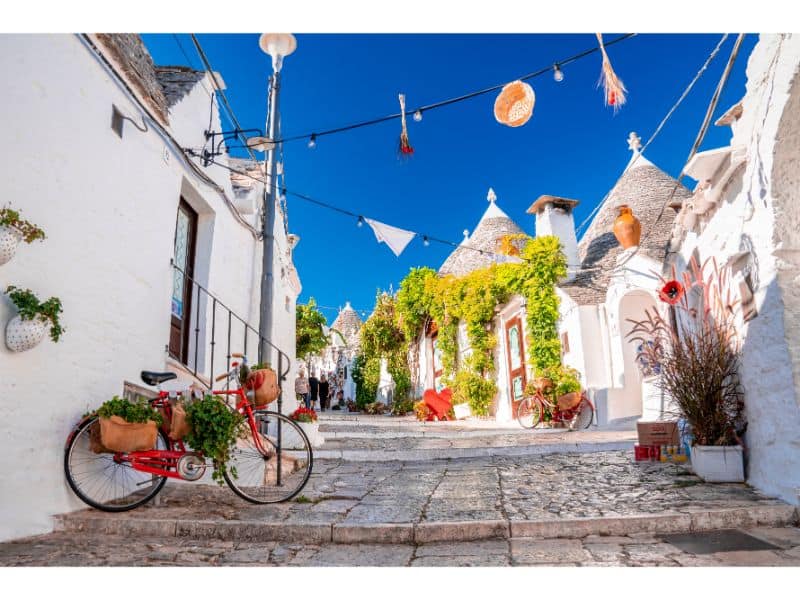
With no mortar or other compound holding the limestone slabs together, the people of Alberobello would deconstruct these trulli homes when the tax inspector (sent from the King of Naples) was in the area. If there was no house standing when the tax inspector came looking, then there was no house for the people to be taxed on. And then, once the tax inspector left the area, the trulli houses could easily be rebuilt by stacking the slabs on one another yet again.
Other than being built to avoid taxes, the trulli homes of southern Italy were also incredibly versatile and provided their owners with a great place to call home. By stacking the limestone slabs in such a way as to create the conical roofs that made the homes famous, the trulli houses were surprisingly stable. And the thick stone protected the inhabitants from the hot sun of Italy.
Not only did the trulli houses save the people who owned them money on taxes, but they also provided a great place to live and raise a family. Truly a marvel of Italian architecture, design, and engineering, the trulli homes draw in visitors from all over the world to check them out.
| Aspect | Description |
|---|---|
| Location | Alberobello, Puglia region in southern Italy |
| Architectural Style | Dry-stone huts with conical roofs made of stone |
| Construction Technique | Built without mortar, using interlocking stones |
| Interior Layout | Typically one room with a domed ceiling and small openings |
| Exterior Features | Whitewashed limestone walls, cone-shaped roofs with decorative pinnacles |
| Purpose | Originally built as temporary field shelters and storehouses for farmers |
| History | Dating back to the 14th century, with many trulli constructed in the 16th-18th centuries |
| UNESCO World Heritage Site | The “Trulli of Alberobello” was designated a UNESCO site in 1996 |
| Tourism | Alberobello has become a popular tourist destination, known for its trulli neighborhoods |
| Preservation Efforts | Ongoing efforts to maintain and restore the traditional trulli buildings |
Where are Trulli Conical Houses Located?
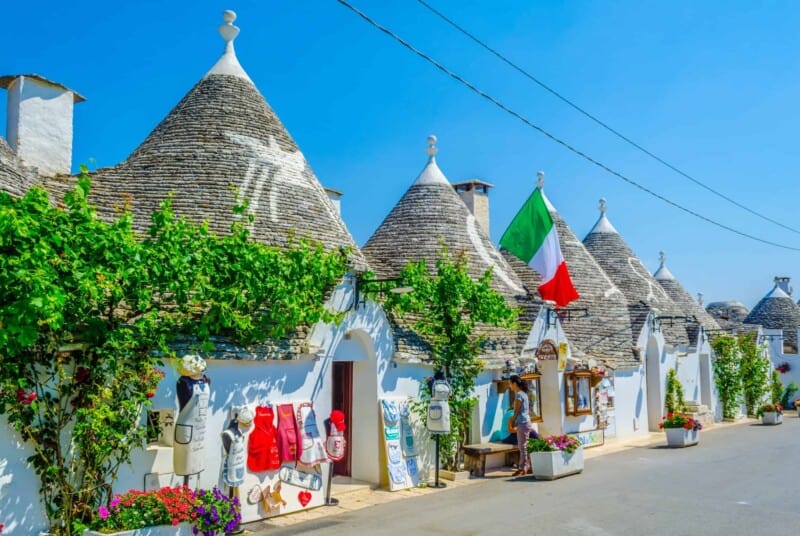
Although many still stand today, the construction of new trulli homes stopped in the early 20th century. That said, if you want to find trulli, you’ll need to head to southern Italy and visit the region of Puglia to check them out.
As mentioned above, Alberobello is by far the most famous place in Puglia to find trulli homes, as it is home to over 1,500 of the homes grouped, even being recently designated as a UNESCO World Heritage Site. Many of the trulli homes left in Alberobello have been converted into stores, shops, and cafes.
But even though Alberobello is the most famous place to find trulli, it isn’t the only city or town in Puglia where you can visit these incredible homes. And due to the popularity of Alberobello and the influx of tourists, we recommended looking elsewhere to avoid the crowds.
If you’re visiting Puglia, you’ll likely be exploring the Itria Valley countryside anyway. And if you are (you definitely should!), you’ll come across many trulli homes along your travels.
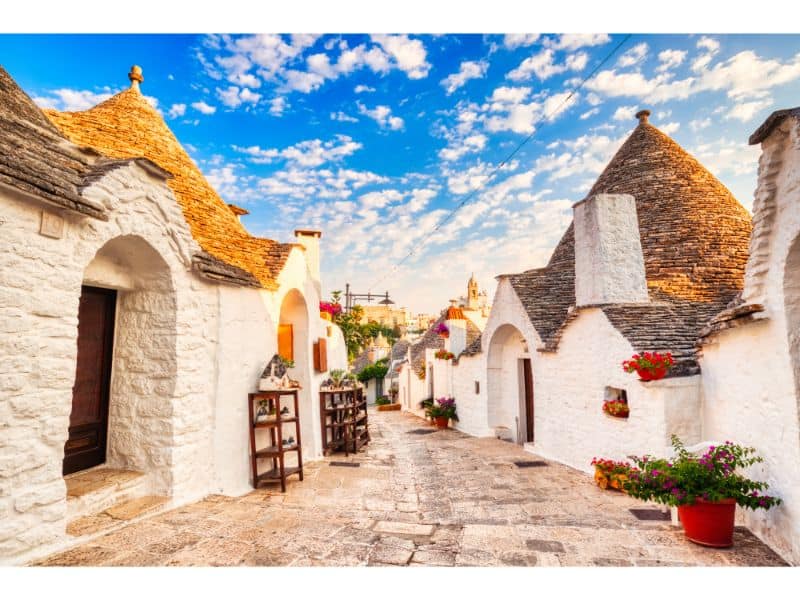
As you drive around the countryside visiting wineries and many other small towns you come across, you’ll see trulli houses all over the place. You won’t see a large grouping of them like you would if you went to Alberobello, but you won’t really see large groups of crowds checking them out either!
So wander around Itria Valley and find trulli houses by themselves on a hill, sitting in smaller groups, or some converted into more modern homes. It’s an adventure just to explore the region and see all the different trulli you encounter. Besides exploring the countryside of Itria Valley, you can also head to the towns of Ceglie, Cisternino, Locorotondo, and Martina Franca to see even more examples of the fantastic trulli houses of Puglia.
Where to Stay in a Trullo Home?
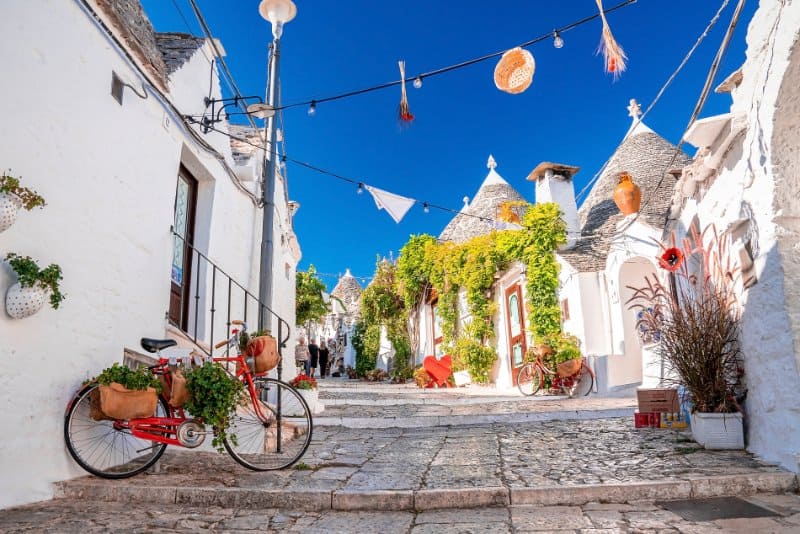
If you’re like many people who visit Alberobello, you probably desire not only to see the trulli homes but also to stay in one. And if you don’t think you fall into that camp, you might change your mind once you get to town and start seeing them in person. Since this has become such a popular idea, it only makes sense that people and businesses in the area would take notice and start offering visitors the chance to stay in a home built using trullo construction.
There are several options in the town of Alberobello, but our favorite is Tipico Resort. Located right in the heart of downtown Alberobello, Tipico Resort offers trulli homes of all different sizes, so that no matter how many people are in your group, you’ll be able to have somewhere to stay. The owners include a free continental breakfast for their guests and are well-known for having incredible customer service and for making it a much more personal experience.
See Related: Best Things To Do In Positano
Other Things to do in Alberobello
Walk Through the Streets of Alberobello

As one of the most important things for you to do in just about any city or town in Italy, but especially the smaller ones like Alberobello, is to explore the streets and wander through town. You can always opt for a guided walking tour to ensure you see the best things the town has to offer, but we prefer just going around on your own and letting your curiosity guide you along.
As you walk the ancient streets of Alberobello, be sure to make your way towards the town’s Rione dei Monte quarter. It won’t be hard to get there since there are only eight roads from the city center, and all of them eventually make their way up the hill to Rione dei Monti! Check out the shops, restaurants, gelato spots, and more as you wander around.
See Related: Best Things To Do In Bellagio, Italy
Check Out the Church of Sant’Antonio da Padova
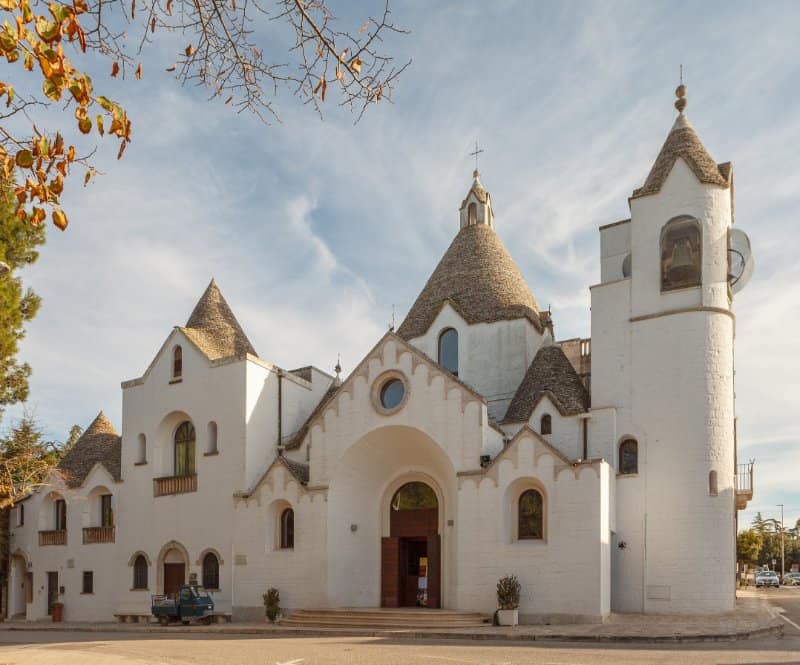
Not only do the roads eventually take you to Rione dei Monti, as mentioned above, but they also seemingly all lead to the iconic religious landmark of Alberobello, the Church of Sant’Antonio da Padova. What makes this church so special will be obvious as soon as you see it in the distance; it’s the only church in the entire world built using trulli construction!
So if you’re into the trulli homes you’ve seen all over, you’ll be blown away by the same type of construction used on a much larger scale, big enough to build an entire church. The church’s exterior will first catch your eye, with its famous conical roof beckoning you over from a distance. But once you get inside, the beauty is just getting started.
Let your eyes wander around the interior, taking in the limestone slabs stacked until they crescendo at the roof’s apex. It’s one of those things that you have to see to truly appreciate its beauty.
Go on a Segway Adventure Through the Town

Take a segway tour through the town during your visit for a unique way to experience Alberobello. Don’t be afraid of trying out the Segways for fear of falling off or being unable to ride them. They’re super intuitive and easy to use once you get the hang of them!
We recommend going on a guided tour through the town from Allways Puglia if you decide to go on the Segway tour. The expert guide you get from Allways Puglia will take you to the best spots in town to catch amazing views while simultaneously answering any questions you have. It’s a great experience, unlike anything else you will find in the area.
Related Resources

0 Comment